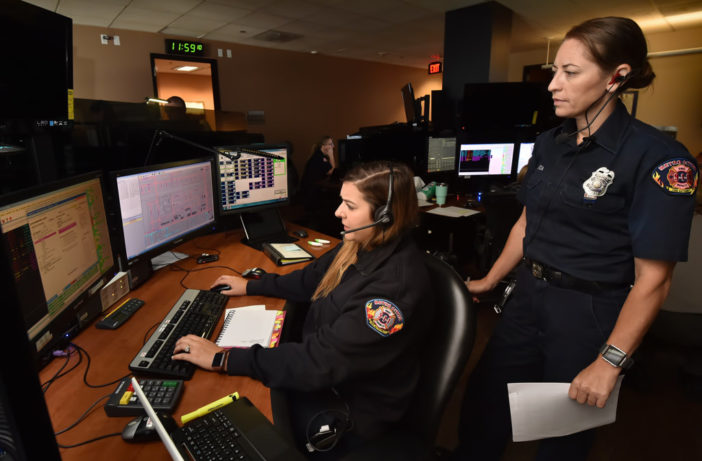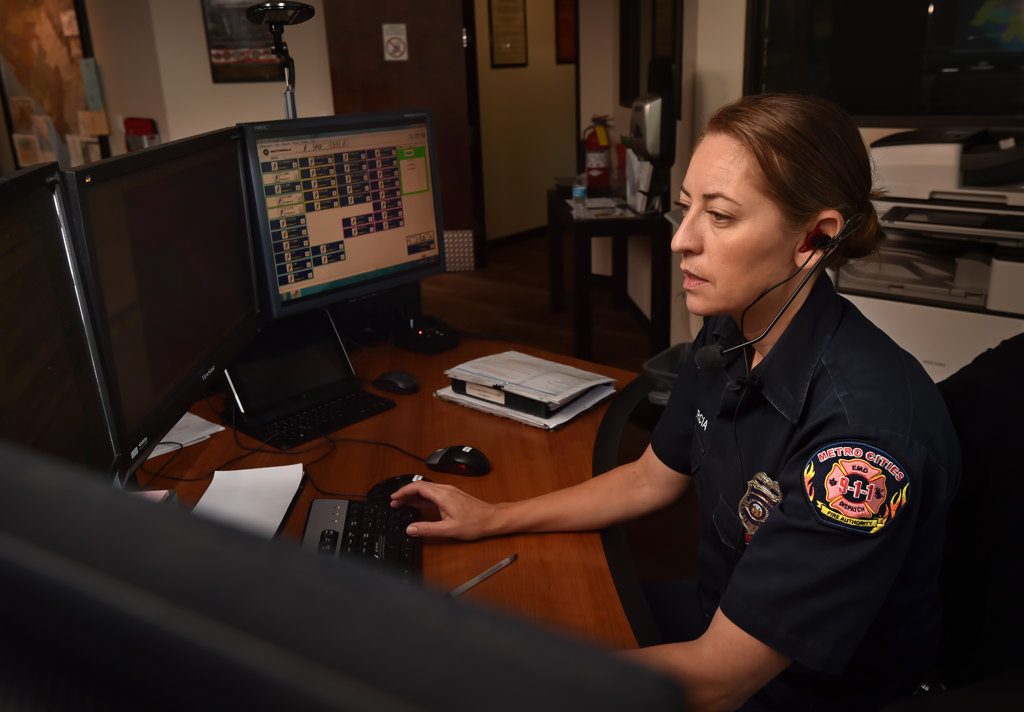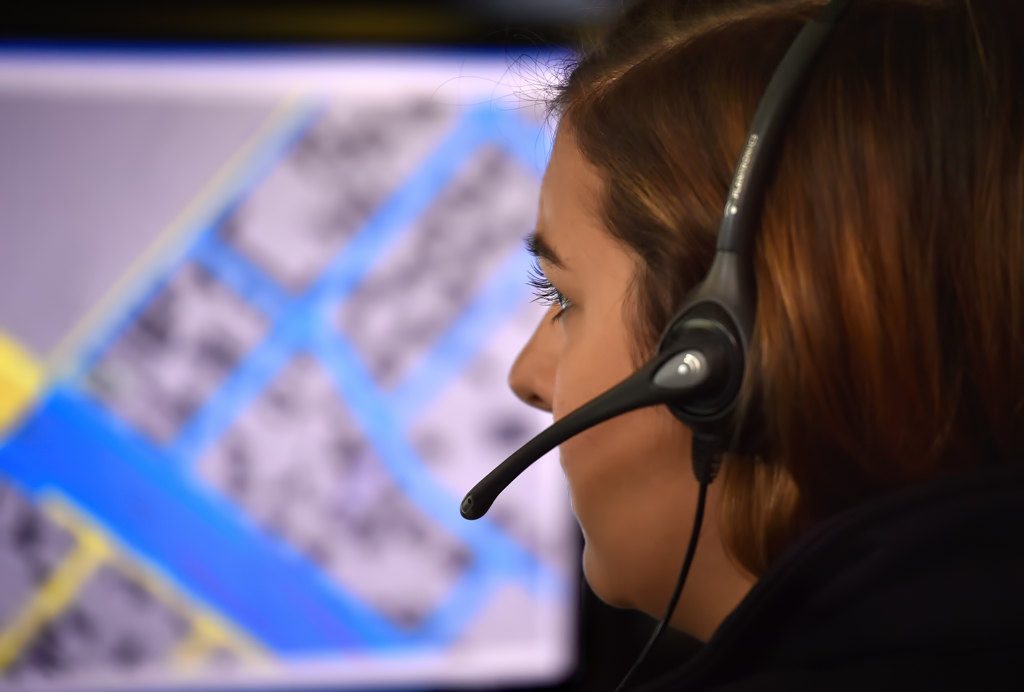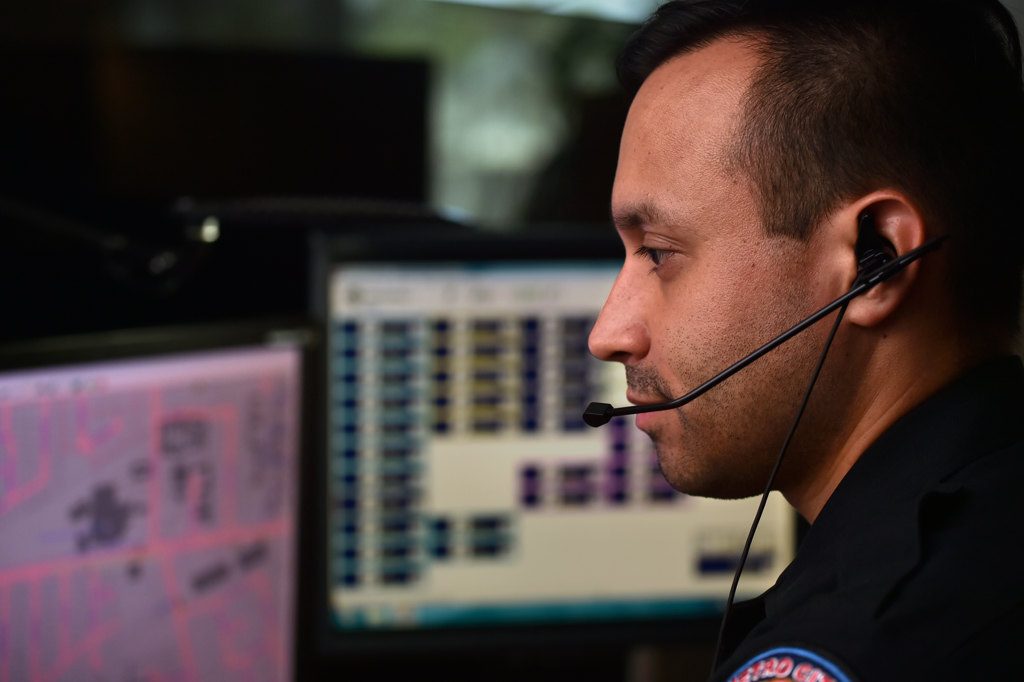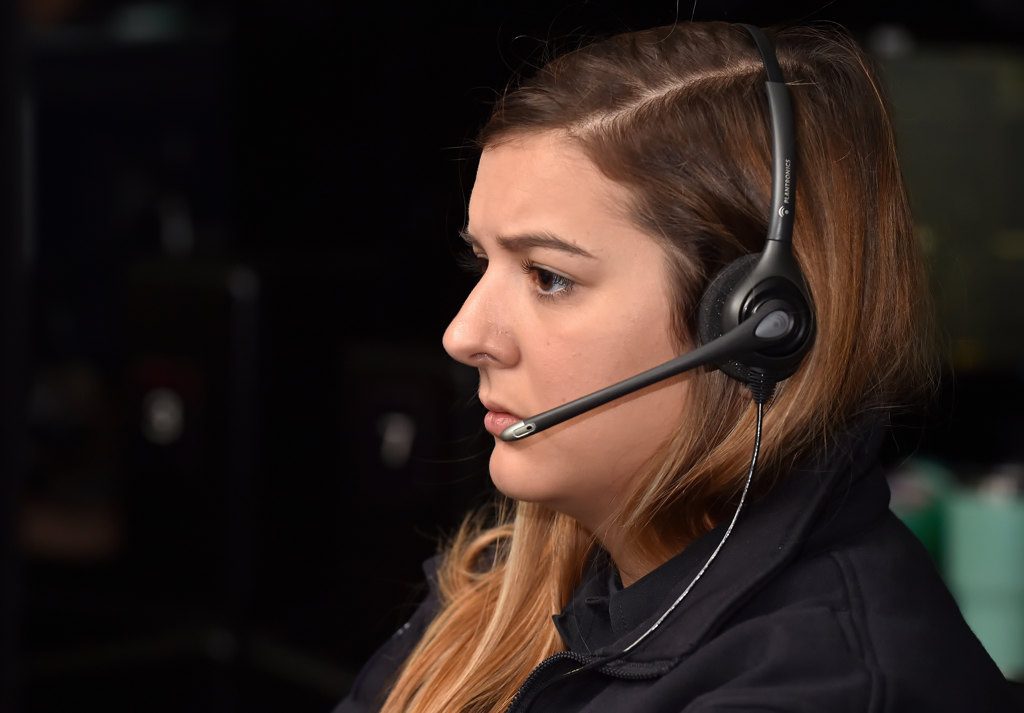The recent 911 call came from a woman in Newport Beach.
She had found her boyfriend unresponsive.
Metro Net Fire Dispatch call center Dispatcher Amber Lara instructed the woman to begin chest compressions as she dispatched medics to the scene.
“There are flies all over him,” the caller told Lara.
“Do you feel he’s beyond help?” the dispatcher asked.
The woman requested that CPR instructions continue.
And so it went, until Newport Beach firefighters found the man in his mid-40s “extremely deceased,” Lora said.
Maybe the woman was in shock. Maybe she was in denial.
Whatever the case, Lara performed her job as she was trained: remain calm and professional, get to the heart of the issue as quickly as possible and get the necessary information to dispatch medics, and treat all callers with respect.
Metro Net Fire Dispatch, housed in the same building where Anaheim Fire & Rescue is headquartered, is a joint powers authority (JPA) managed by the City of Anaheim and funded by the eight member cities it serves (Anaheim, Brea, Fullerton, Garden Grove, Orange, Huntington Beach, Newport Beach and Fountain Valley).
Over the last five years (2012-2016), annual call volume has increased 23.2 percent.
Despite that dramatic surge, Metro Net dispatchers have continued to deliver excellent service to an area that spans 210 square miles and includes 1.3 million people.
For example, nearly 95 percent of the 93,096 calls that came into Metro Net as 911 emergencies in 2016 were answered in less than 10 seconds — with almost all of those calls answered in less than 5 seconds
With a maximum of eight Metro Net dispatchers on duty at the same time and a minimum of four, that key statistic is a testament to the quality of the dispatchers, who at times have to think on their feet, says Tracy Nolan, administrative supervisor at Metro Net.
“We’re very proud of what we do here,” Nolan said.
The 911 calls answered by Metro Net dispatchers in 2016 represent about a third of the total volume of 302,753 fire and medical emergency calls last year, Nolan noted.
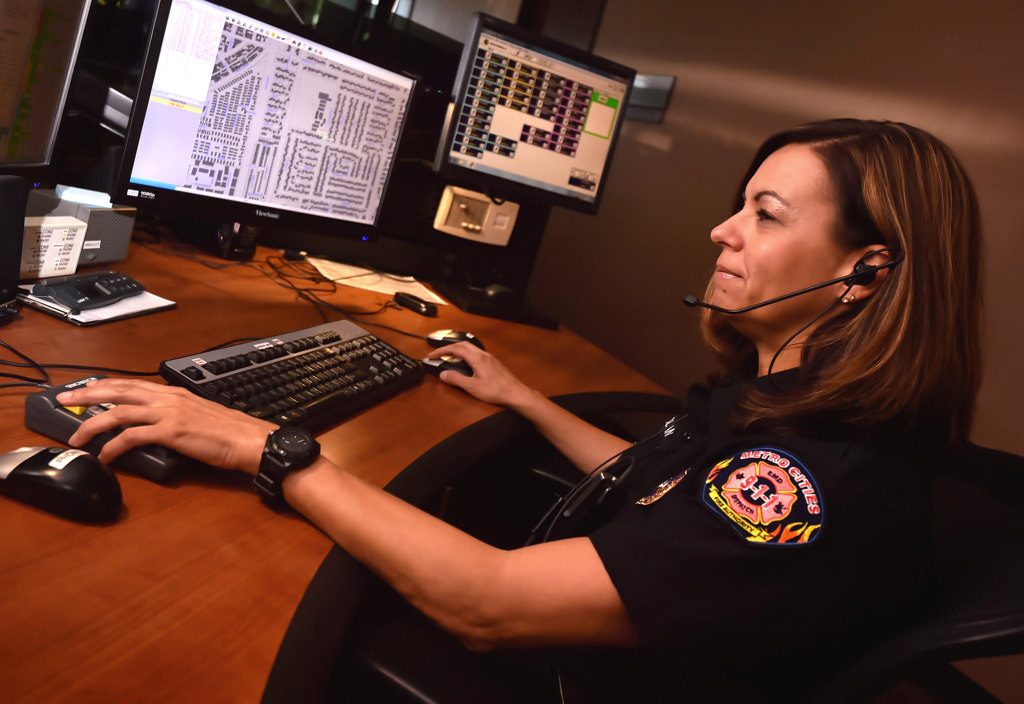
Tracy Nolan, supervisor of Metro Cities Fire Authority, takes medical 911 calls.
Photo by Steven Georges/Behind the Badge OC
Medical aid calls account for 83 percent of all 911 calls that come into Metro Net. Calls from people feeling sick are the most common, followed by traffic accidents, falls, an unconscious/unresponsive person and a person having trouble breathing.
Behind the Badge recently spent time at Metro Net to glean five memorable calls that underscore the stellar work being performed by dispatchers on the third floor of a high rise in the city’s civic-center district.
There are three other fire and medical dispatch centers in the county – Orange County Fire Authority, Laguna Beach Fire and Costa Mesa Fire – but Metro Net is unique in that it is a JPA that is strictly a dispatch center, working in conjunction with the member cities’ fire departments such as Anaheim Fire & Rescue.
One key truism learned from the visit: a Metro Net dispatcher is only as good as the caller is.
“We need a quick and accurate picture (of the emergency) in order to send out the appropriate level of resources,” Nolan said. “But no matter who you are and what you’re calling about, we’re here to help you.”
THE CHRONIC CALLER
Erika Garcia, a Metro Net dispatcher for five years, has gotten to know one caller in particular who, in spurts, floods the dispatch center with 911 calls but then hangs up and tries to hide from responding medics.
The Spanish-speaking male, a resident of Garden Grove, calls when he has been drinking, Garcia said — usually from a park near his home.
He typically complains of chest pains.
On one call in which Garcia couldn’t get the man to tell her his location (which almost always is the case), Garcia told the firefighter-engineer driving an engine to honk his horn so she could narrow in on where the caller was hiding, based on how strong/faint the honk sounded on the caller’s cell phone.
To keep the caller distracted, Garcia told him to do jumping jacks.
He complied, and fire personnel spotted him. The engine and an ambulance surrounded him and got him help.
On another call, Garcia heard someone in the background — a passerby — and told the caller to give the passerby his phone, which he did.
“Tell me where you’re at,” Garcia told the passerby. “Don’t give him back his phone yet.”
The tactic worked.
Garcia was able to dispatch medics to the caller’s location.
PETS IN DISTRESS
Garcia has advice for pet owners who have a recliner:
Make sure your cat or dog isn’t under the recliner when you sit on it.
In the last three months, the animal-loving dispatcher has answered eight calls involving pets in distress.
In one call, a cat’s neck had gotten stuck in the apparatus under the recliner when the owner sat down on it and stretched out.
The recliner had to be taken apart in order for the cat to be freed.
The same thing happened to a dog.
The other six pets-in-distress calls concerned a cormorant trapped in a tree, a dog’s leg stuck in a metal chair, a dog stuck in a hole in a backyard, a dog’s tail stuck in the spoke of a bicycle, a cat stuck in the space between a wall inside a home, and a dog’s head stuck in a hole in a brick wall.
THE PIZZA STRATEGY
Dispatcher Kelly Haritgan (a former Domino’s employee) came up with a clever question when a 911 caller is, for whatever reason (panic being one of them), unable to provide an address.
A dispatcher then will ask the caller, “If you wanted a pizza right now, where would you have it delivered?”
Said Nolan: “People suddenly will know their address. Isn’t that amazing?”
THE ANGRY GIRLFRIEND
In one of O.C.’s most infamous crimes in recent years, a Garden Grove woman tied her boyfriend to a bed after an argument, sliced off his penis and tossed the organ in a garbage disposal and flipped on the switch.
In June 2013, Catherine Kieu was sentenced to seven years to life in prison for the July 11, 2011 crime on John Doe, then 60.
Kieu had called 911 to control the bleeding — apparently out of a fit of compassion.
Metro Net dispatcher Karen Schilling at first couldn’t hear Kieu well.
“Let’s turn the garbage disposal off,” Schilling instructed the caller.
Kieu did, and the 911 call continued.
Kieu was found guilty by a jury of one felony count of torture, one felony count of aggravated mayhem, and a sentencing enhancement for the personal use of a knife.
At the time of the crime, Kieu and John Doe had a romantic relationship and lived together in Garden Grove.
Kieu was able to tie the victim to the bed after lacing dinner she had prepared with Ambien.
THE TWO-FOR-ONE CALL
Dispatcher Josh Casillas recently exhibited cool calm and quick thinking after a year on the job when he got a 911 call about two young females overdosing on heroin.
On the evening of Aug. 3, in Huntington Beach, a man walking his dog spotted the women passed out in a parked car. He managed to gain entry into the vehicle.
The man had pulled one of the women out of the car and had flagged down a passerby to pull the other woman out as he called 911.
Casillas instructed the caller to put his cell phone on speaker mode. Then, he proceeded to instruct the two men on performing chest compressions on the unconscious women, who were in their 20s.
About five minutes into the 911 call, an ambulance rolled up to the scene. The women were transported to the hospital.
“It was definitely an interesting call to have,” Casillas said. “It was definitely an experience.”
As it is almost every shift at Metro Net Fire Dispatch.
 Behind the Badge
Behind the Badge
